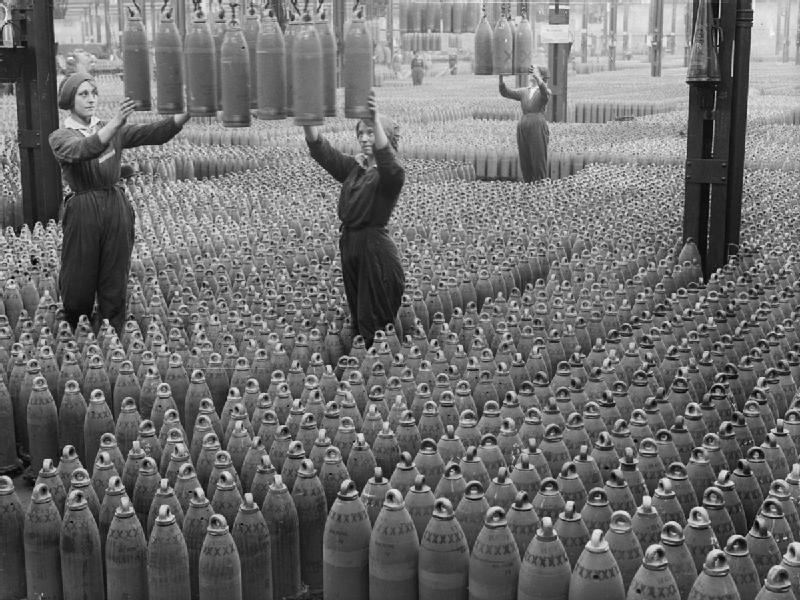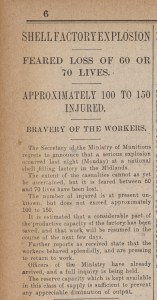
June 3, 2014, by Kathryn Steenson
Chilwell Shell Filling Factory Explosion
On 1st July 1918, a huge explosion ripped through the National Shell Filling Factory at Chilwell, killing 134 workers and injuring twice as many more.
 The vast majority of the dead could not be identified and were buried in a mass grave in St Mary’s Church, Attenborough. Astoundingly, the factory was back in production the following day.
The vast majority of the dead could not be identified and were buried in a mass grave in St Mary’s Church, Attenborough. Astoundingly, the factory was back in production the following day.
Opened in 1915, the factory’s purpose was to fill shell casings (manufactured elsewhere and brought in by railway) with an explosive mixture that included TNT. Many of the 6000-strong workforce were women, employed to do vital war work as more and more men were sent to the front. The shifts were long – 12 hours – and the boiler suits and face masks offered scant protection from the chemicals they were exposed to. The skin and hair of the workers gradually turned a yellow-orange shade which earned them the nickname of ‘canary girls’. Other symptoms included nausea, skin rashes, pain and fatigue.
Despite this, by the end of the war, the Chilwell factory had filled just over 19 million shells. Within a month of the devastating explosion, the factory achieved its highest weekly output. Due to wartime reporting restrictions the explosion, like several other munitions factory explosions, received little attention in the press. A short article from the Nottingham Guardian on the 3rd July 1918 does not give the location of the factory and downplays the number of people killed and injured. A memorial was unveiled on the site in 1919, but as the site was, and still is, an Army base, it was not accessible to the public.

Female munitions workers guide 6 inch howitzer shells being lowered to the floor at the Chilwell ammunition factory in Nottinghamshire in July 1917. (Ref: Q 30040. Courtesy Imperial War Museum)
In recent years the explosion has received more publicity. Footage of the factory and workforce taken a year before the explosion was discovered in a Long Eaton shed and has been painstakingly restored. Parts of it can be seen in a BBC documentary about the explosion, ‘The Killing Factories’, which is available in BBC iplayer until the 9th June. The programme uses archived recordings of former employees and interviews with their families to discuss what life at the munitions factory was like, and the impact the factory and the explosion had on the people of Chilwell.
If you’re interested in Nottinghamshire during World War One, please visit our exhibition ‘All Quiet in the Weston Gallery’ at Lakeside Arts Centre, which runs until September. If you’ve got family letters, diaries or photos from WWI and would like to learn more about how to look after the documents or share them with other people, then the Life Lines project is running a series of workshops aimed at helping you explore your family connection to WWI and interact with other people’s experiences.
No comments yet, fill out a comment to be the first

Leave a Reply